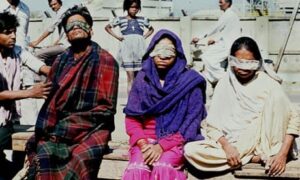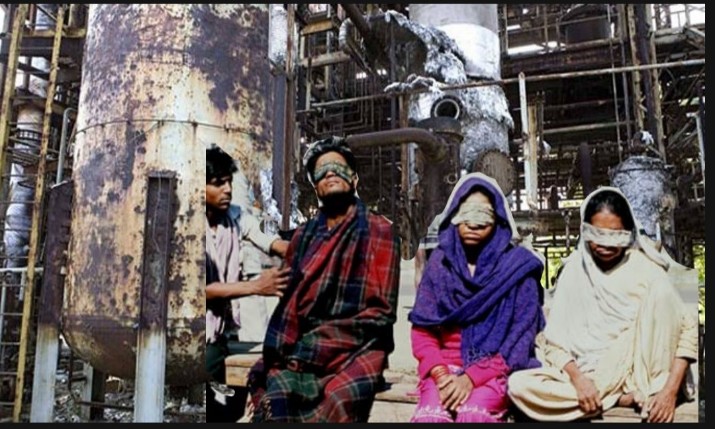Despite a decrease in demand for pesticides in the early 1980s, UCIL continued production, resulting in a buildup of unused MIC at the Bhopal facility.
Two local trade unions first raised concerns about pollution within the Bhopal plant in 1976. In 1981, a tragic accident occurred when a worker carrying out maintenance on the plant’s pipes was accidentally splashed with phosgene. In a state of panic, the worker removed his gas mask and inhaled a significant amount of the toxic gas, resulting in his death 72 hours later. These incidents prompted journalist Rajkumar Keswani to investigate and publish his findings in Bhopal’s local paper Rapat, warning the people of Bhopal that they were living on the brink of a disaster: “Wake up, people of Bhopal, you are on the edge of a volcano.”

In January 1982, a phosgene leak occurred at the Bhopal plant, which led to the hospitalization of 24 workers who had not been provided with protective equipment. The following month, in February 1982, 18 workers were exposed to an MIC leak. In August 1982, a chemical engineer sustained 30% body burns after coming into contact with liquid MIC. In October 1982, an MIC leak caused severe chemical burns to the MIC supervisor who attempted to stop the leak, and two other workers were also significantly exposed to the toxic gases. Over the course of 1983 and 1984, multiple leaks of MIC, chlorine, monomethylamine, phosgene, and carbon tetrachloride occurred, sometimes in combination.
The chemical disaster that occurred on the night of 2-3 December 1984 at the Union Carbide India Limited (UCIL) pesticide plant in Bhopal, Madhya Pradesh, India, is known as the Bhopal disaster or Bhopal gas tragedy. It is considered the worst industrial disaster in the world, as over 500,000 people in the neighboring towns were exposed to the highly toxic gas methyl isocyanate (MIC). The exact death toll is uncertain, but the official immediate death toll is 2,259. In 2008, the Government of Madhya Pradesh provided compensation to the families of 3,787 victims k*lled in the gas release, as well as to 574,366 injured victims. According to a 2006 government affidavit, the leak caused 558,125 injuries, including 38,478 temporary partial injuries and around 3,900 severe and permanent disabilities. Some estimates suggest that 8,000 people died within two weeks, and another 8,000 or more have since died from gas-related diseases.

UCIL, the owner of the Bhopal factory, was mostly owned by the US-based Union Carbide Corporation (UCC), with a 49.1% stake held by Indian government-controlled banks and the Indian public. In 1989, UCC paid $470 million (equivalent to $907 million in 2021) to settle lawsuits related to the disaster. In 1994, UCC sold its stake in UCIL to Eveready Industries India Limited (EIIL), which later merged with McLeod Russel (India) Ltd. Eveready completed the site’s clean-up in 1998 when it ended its 99-year lease and handed over control of the site to the Madhya Pradesh state government. Dow Chemical Company acquired UCC in 2001, 17 years after the disaster.
On multiple occasions between 1986 and 2012, civil and criminal cases filed against Union Carbide Corporation (UCC) and Warren Anderson, the CEO of UCC during the Bhopal disaster, were dismissed by US courts and redirected to Indian courts. The reason for this was that the US courts viewed UCIL as a separate entity in India. In addition, civil and criminal cases involving UCC, UCIL, and Anderson were filed in the District Court of Bhopal, India. In 2010, seven Indian nationals who were UCIL employees at the time of the disaster, including the former UCIL chairman, were found guilty in Bhopal of causing death by negligence and sentenced to two years imprisonment and a fine of around $2,000 each, the maximum punishment under Indian law. All were released on bail soon after the verdict. An eighth former employee was also convicted but passed away before the verdict was delivered.
